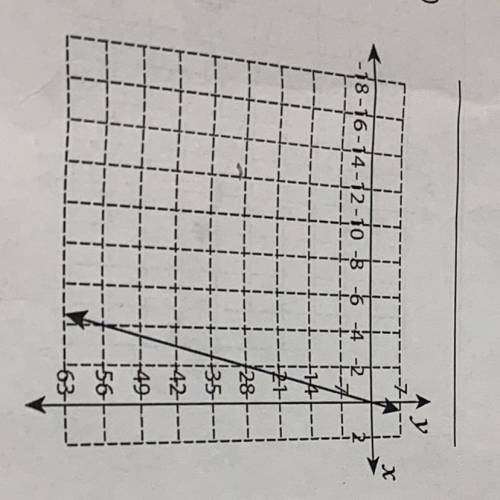
Mathematics, 08.12.2020 03:00 HtetPaing9358
How do I do this? It’s a constant of proportionality Graph. It says it ‘identify the constant of proportionality (k) for each graph and write the proportional relationship (y=kx). 20 points, 7th grade mathematics. OH YEAH I ALMOST FORGOT. y and x are missing haha Anyways Have a merry Christmas and a happy new year!!! (Please try to explain well, we have asked multiple times and still don’t understand lol) Example above


Answers: 2


Other questions on the subject: Mathematics

Mathematics, 21.06.2019 18:30, 25jzaldivar
Players on the school soccer team are selling candles to raise money for an upcoming trip. each player has 24 candles to sell. if a player sells 4 candles a profit of$30 is made. if he sells 12 candles a profit of $70 is made
Answers: 2


Mathematics, 21.06.2019 20:30, GreenHerbz206
Tom is the deli manager at a grocery store. he needs to schedule employee to staff the deli department for no more that 260 person-hours per week. tom has one part-time employee who works 20 person-hours per week. each full-time employee works 40 person-hours per week. write and inequality to determine n, the number of full-time employees tom may schedule, so that his employees work on more than 260 person-hours per week. graph the solution set to this inequality.
Answers: 1

Mathematics, 21.06.2019 21:30, gonzalezashley152
In a test for esp (extrasensory perception), the experimenter looks at cards that are hidden from the subject. each card contains either a star, a circle, a wave, a cross or a square.(five shapes) as the experimenter looks at each of 20 cards in turn, the subject names the shape on the card. when the esp study described above discovers a subject whose performance appears to be better than guessing, the study continues at greater length. the experimenter looks at many cards bearing one of five shapes (star, square, circle, wave, and cross) in an order determined by random numbers. the subject cannot see the experimenter as he looks at each card in turn, in order to avoid any possible nonverbal clues. the answers of a subject who does not have esp should be independent observations, each with probability 1/5 of success. we record 1000 attempts. which of the following assumptions must be met in order to solve this problem? it's reasonable to assume normality 0.8(1000), 0.2(1000)%30 approximately normal 0.8(1000), 0.2(1000)% 10 approximately normal srs it is reasonable to assume the total number of cards is over 10,000 it is reasonable to assume the total number of cards is over 1000
Answers: 1
You know the right answer?
How do I do this? It’s a constant of proportionality Graph. It says it ‘identify the constant of pro...
Questions in other subjects:







Mathematics, 10.05.2021 22:40



Mathematics, 10.05.2021 22:40



